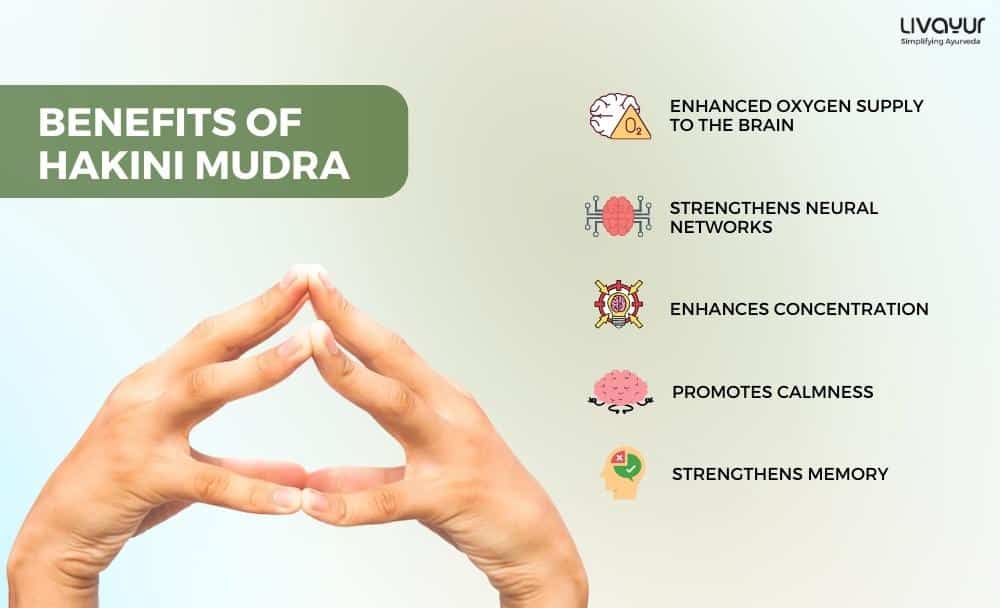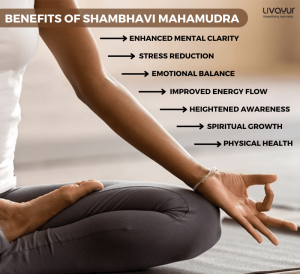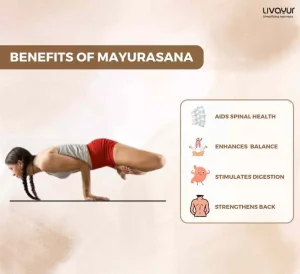
A lot of people confuse ‘Yoga’ with ‘Asanas.’ However, do you know that yoga is not all about postures? It includes various other practices like breathing exercises, hand gestures, meditation, etc.
Hand gestures in yoga, in fact, play a pivotal role. They are called Mudras and are known to offer a wide range of physical and mental health benefits.
Mudra is a term with many meanings. It is a mystic position of the hands, a seal, or even a symbol. One of the many hand gestures is ‘Hakini Mudra.’ Simple and easy, this Mudra offers incredible health benefits, most notably for the brain. This is why it is sometimes also called the ‘Brainpower Mudra.’
Let’s learn more about Hakini Mudra, Hakini Mudra benefits, and steps to practice in this article.
What is Hakini Mudra?
Hakini Mudra is one of the Hasta Mudras. It is a sacred hand gesture that is performed using just hands. The gesture is named after Goddess Hakini, who is the ruler of the Ajna Chakra, or the chakra that governs our minds.
One can be in ‘Hakini Mudra’ during yoga and meditation practices as a means of channeling the flow of vital life force energy known as prana. Hakini Mudra is useful during meditation as it is believed to help strengthen one’s focus and control over the mind. It is also easy to incorporate into your daily Yoga routine, as the Mudra is ideally practiced when seated in stable sitting postures or Asanas, such as the lotus pose, Padmasana, the easy pose, or Sukhasana, among others.
Health benefits of Hakini Mudra
Hakini Mudra offers a number of health benefits through its positive impact on breathing. It helps in deepening the respiration process and allows the lungs to function more efficiently.
Being in this mudra improves the flow of oxygen to the brain as well as other organs of the body. This is why being in this mudra frequently boosts our memory and brain power.
It has a refreshing and revitalizing effect on brain function, enhancing coordination between the left and right hemispheres of the brain. This translates primarily into mental health and brain function benefits, which include:
- A sharper memory and a better ability to retain new information
- An improved ability to recall information
- A calmer and more relaxed state of mind that allows for clear thinking
- Enhanced concentration and focus
- Improved brain cell health due to enhanced oxygen supply to the brain
- Improved coordination between both brain hemispheres
- ber neural networks in the brain
- Lesser anxiety, stress, fatigue and depression
Step-by-step guide for Hakini Mudra
How to do Hakini Mudra?
Well, as noted earlier, the practice of Hakini Mudra is rather simple. Yet, it helps when we practice it using the right approach. To get started, make sure that you are in a meditative posture, such as the lotus pose or the diamond pose, but most importantly, you should be comfortable. Here’s a step-by-step approach to be in Hakini Mudra:
- Keep your eyes closed. It will help you stay away from distractions.
- Be aware and focus on your breathing. Do not breathe too hard or too fast.
- Rest your hands on your thighs or knees.
- Your palms should face the ceiling.
- Slowly raise your hands while also drawing them closer together. Your palms should now face each other.
- Bring your palms closer so that the fingertips of one hand touch the same fingertips of another one.
- Slowly raise your joined hands so that the fingers are brought in front of your forehead.
- Try to look at the center of your forehead with your eyes. Shift your gaze upwards to increase focus on the third eye chakra.
- Place your tongue against the roof of the mouth and breathe comfortably.
- Make sure that your tongue is relaxed. Now, exhale.
- Keep repeating the practice regularly for the best results.
The flow of energy is promoted by keeping the fingertips connected, so make sure that they are touching each other throughout. The practice is known to boost brain power and memory, but for best results should be included in your Yoga practice for at least 45 minutes a day or in 3 intervals of 15 minutes each.
Precautions to take with Hakini Mudra
There are no recognizable side effects of Hakini Mudra. However, there are a few Hakini mudra precautions a person should take care of which are listed here:
- People who have hand injuries should be careful while in this mudra.
- Patients with rheumatoid arthritis shouldn’t do it for longer and shouldn’t exert a lot of pressure on their fingers.
- One should always approach any yoga with an open mind, heart, and soul. There should be no mental blockers if you’re starting any Yoga practice.
- No yoga should be performed in an uncomfortable stance. Only perform Hakini Mudra when you’re comfortable with your body and your space.
Who can and cannot do Hakini Mudra
Our pain distracts us from our breathing and doesn’t allow us to go into a proper meditative state. Hence, it is advisable to avoid being in Hakini Mudra and exert more pressure on our bodies when we are in pain. Here are the people who should not perform Hakini Mudra:
- Anyone with a hand injury shouldn’t perform Hakini Mudra.
- Anyone in a lot of physical pain or discomfort should also avoid Hakini Mudra.
Other than the abovementioned people, everyone else who can find a comfortable space within their bodies and outside as well, can and should perform Hakini Mudra.
When to do Hakini Mudra
Here comes the cherry on the top of the cake, which is Hakini Mudra. There are no restrictions as to when one should be in Hakini Mudra.
Hakini Mudra can be performed anytime, anywhere.
Yes, this is how simple it is! You can sit in Hakini Mudra continuously for 30-35 minutes, or you can have three sessions of 12 minutes each throughout the day. For best results, it is recommended to practice the gesture during the early morning hours at sunrise.
You can perform it either on an empty stomach or after having a meal for the best Hakini Mudra benefits.
FAQs
1. Are there any Hakini Mudra side effects?
Hakini Mudra has no side effects, but you should practice it with awareness. Avoid excessive force and strain on the fingertips.
2. What is the best mudra for memory power?
The regular practice of Hakini Mudra brings about equilibrium in the functions of higher brain centers, leading to improved memory power, concentration, thinking, and decision-making abilities. It is also known as a mudra for mind control as it enhances overall brain functions, fosters coordination between both hemispheres of the brain, and harmonizes the 6th chakra. As a beneficial remedy, it helps alleviate stress and addresses various issues related to the mind.
3. How long should Hakini Mudra be practiced?
The Hakini gesture can be performed continuously for 30-35 minutes or in three sessions of 12 minutes each throughout the day. For best results, it is recommended to practice the gesture during the early morning hours at sunrise. You can perform it either on an empty stomach or after having a meal for the best Hakini Mudra benefits.
Conclusion
Hakini Mudra is one of the easiest hand gestures to practice every day. Hakini Mudra’s benefits are immense, especially for your mental health and brain power. Therefore, you should try to practice Hakini Mudra every day. You should definitely take some time out of your schedule for yourself. After all, this is what all yoga is trying to teach us- self-love, self-discipline, and a sweet balance. So, don’t just read this blog about yoga. Start today, start now, start simple. Start your Yoga practice with Hakini Mudra.






















